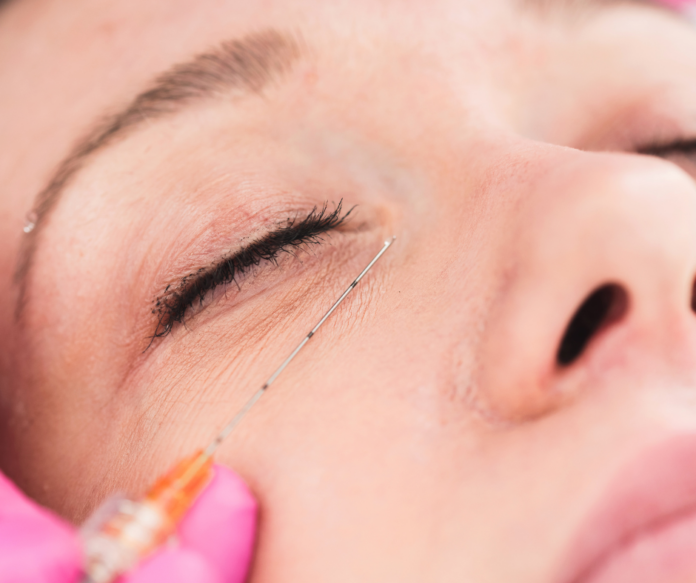
Medspa Services: Addressing Common Questions and Concerns
When considering medspa services, it’s natural to have questions and concerns about the various treatments available. In this article, we will address some of the most common informational queries regarding medspa services. Providing specific answers and solutions to help you make informed decisions about your skincare and aesthetic needs. We will also link to reputable medical resources for added credibility.
Are Dermal Fillers Safe for Under Eyes?
Dermal fillers are a popular medspa treatment used to address various signs of aging. This includes under-eye hollows and dark circles. The safety of dermal fillers for under-eye treatment largely depends on the type of filler used, the skill of the injector. And the individual’s unique anatomy and medical history.
There are several types of dermal fillers available, with hyaluronic acid (HA) fillers being the most commonly used for under-eye treatments. HA fillers, such as Restylane and Juvederm, are considered safe and effective for under-eye rejuvenation when administered by a skilled and experienced injector. These fillers are FDA-approved and have a low risk of complications when used correctly (source).
However, it’s essential to consult with a qualified medical professional before undergoing any dermal filler treatment. They will assess your individual needs, medical history. And potential risks to determine if dermal fillers are a safe and appropriate option for you.
What is the Difference Between Botox and Fillers?
Both Botox and fillers are injectable treatments used to address signs of aging. But they work in different ways and target different concerns.
Botox is a neuromodulator that works by temporarily blocking the nerve signals that cause muscle contractions. This results in the relaxation of facial muscles. Which in turn smooths out wrinkles and fine lines caused by repetitive facial expressions. Botox is most commonly used to treat forehead lines, crow’s feet, and frown lines between the eyebrows (source).
Fillers, on the other hand, are gel-like substances that are injected beneath the skin to restore lost volume, smooth out wrinkles and folds, and enhance facial contours. As mentioned earlier, hyaluronic acid fillers are the most popular type of filler. But other options include calcium hydroxylapatite, poly-L-lactic acid, and polymethylmethacrylate (source).
While both Botox and fillers can help achieve a more youthful appearance, they are used to address different concerns and are often combined for optimal results.
How Long Do Medspa Treatments Last?
The longevity of medspa treatments varies depending on the specific treatment, the individual’s unique response, and the skill of the provider. Here are some general guidelines for the duration of common medspa treatments:
- Botox: The effects of Botox typically last between 3 to 6 months, after which the treated muscles gradually regain their function, and wrinkles may reappear (source).
- Dermal Fillers: The duration of dermal fillers depends on the type of filler used and the area treated. Hyaluronic acid fillers can last anywhere from 6 months to 2 years, while other fillers, such as Sculptra and Radiesse, can last up to 2 years or more (source).
- Chemical Peels: The results of a chemical peel can last anywhere from a few weeks to several months, depending on the depth of the peel and the individual’s skin type (source).
- Laser Skin Resurfacing: The longevity of laser skin resurfacing results varies depending on the type of laser used and the individual’s skin type and lifestyle. In general, results can last several months to a few years, with proper skincare and sun protection (source).
It’s important to note that individual results may vary, and maintenance treatments may be necessary to maintain optimal results.
Are Medspa Treatments Painful?
The level of discomfort experienced during medspa treatments varies depending on the specific treatment and the individual’s pain tolerance. In general, most medspa treatments are well-tolerated and cause minimal discomfort. Topical anesthetics, cooling devices, and other pain management techniques are often used to ensure patient comfort during treatment.
For example, Botox injections are typically described as feeling like a quick pinch. While dermal filler injections may cause mild to moderate discomfort, depending on the area treated and the type of filler used. Laser skin resurfacing and chemical peels can cause varying levels of discomfort. Ranging from mild tingling to a burning sensation, depending on the depth and intensity of the treatment (source).
It’s essential to discuss any concerns about pain or discomfort with your medspa provider. As they can recommend appropriate pain management techniques to ensure a comfortable treatment experience.
Summary: Are dermal fillers safe for under eyes?
Medspa services offer a wide range of treatments to address various skincare and aesthetic concerns. In this article, we addressed common questions about the safety and efficacy of dermal fillers for under-eye treatment. The differences between Botox and fillers, the longevity of medspa treatments, and the level of discomfort associated with these procedures. By consulting with a qualified medical professional and staying informed about the various treatment options available, you can make confident decisions about your skincare and aesthetic needs.



